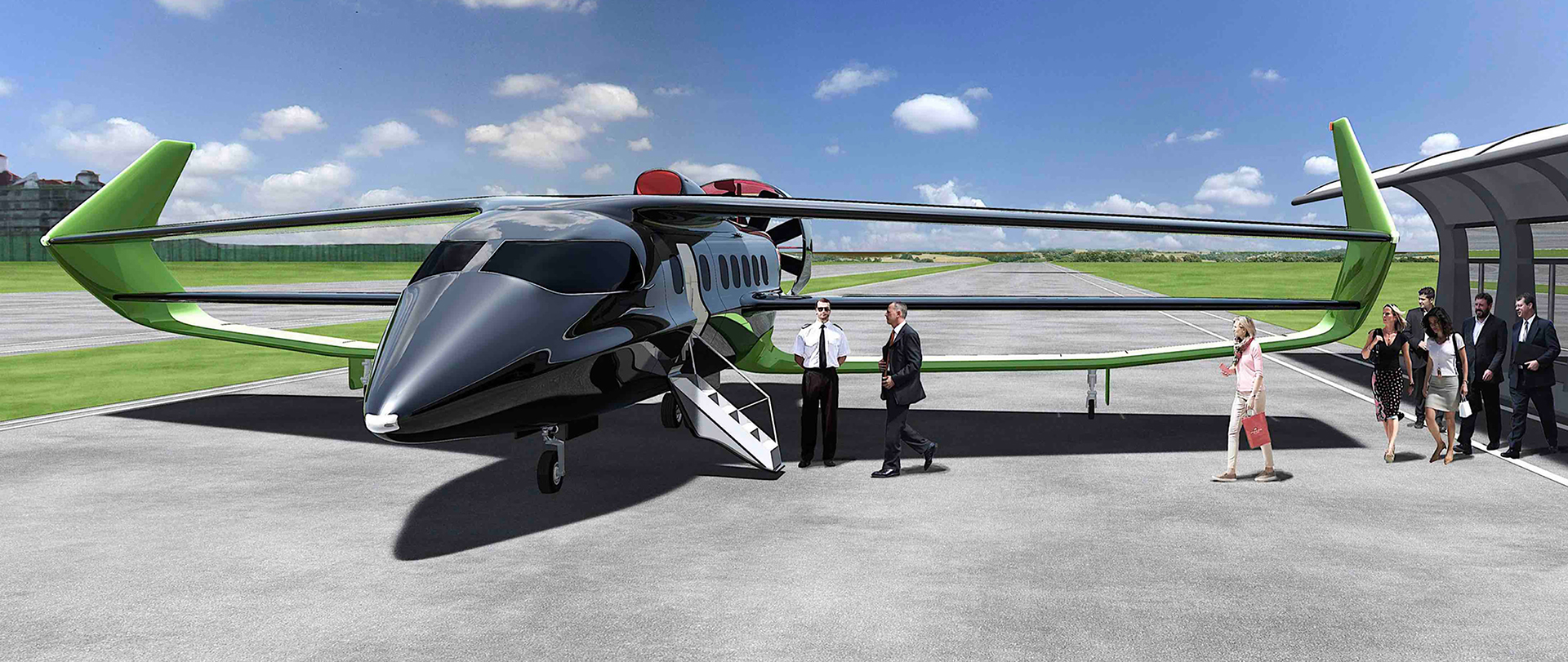If you have not heard of Faradair before, that is likely to change over the coming years as the UK start up develops its hybrid-electric aircraft concept that solves three core problems hindering regional flight growth: Noise – Operational Costs – Pollution
With a clean-sheet design aircraft specifically configured for hybrid-electric flight, BEHA M1H (Bio-Electric Hybrid Aircraft) aims to achieve significant reductions in these areas whilst delivering an economically viable regional air transport solution.
A multi-role asset, it can convert from an eighteen-passenger configuration (which means no emergency exit row or cabin crew is needed) into a cargo only set up, in just fifteen minutes. Opposing gull-wing doors for rapid deplaning and cargo loading. The six seat rows can literally unclip, allowing three LD3 cargo containers and payloads of up to five tons to utilise the same space. As such, it is an environment-neutral workhorse which allows operators to maximize revenue opportunity, for example by passenger flights in the day and then cargo flights at night.
Hybrid-electric flight provides a cost-effective distributed aviation model, enabling local airfields the ability to offer scheduled and charter flight services to regional towns and cities at a price-point unmatched through traditional major airport hubs.
The design of the aircraft, to quote a famous movie trilogy, goes “back to the future” in developing a modern, efficient version for the 21st century. The 57 ft/17.4 metres, triple box wing design, will allow STOL operations (Short Take Off & Landing) from restricted or rural airfields, and raises the potential for aircraft carrier operations too.

It will use a combination of electric motors and biofuel-powered turbogenerator for power, which gives the aircraft whisper quiet propulsion whilst providing the operator a carbon neutral footprint. The electric motors be used for taxi-ing, take off and landing which are where the most fuel is consumed in all aircraft. The biofuel powered generator takes over once cruising to maintain the speed and altitude. This generator both extends the aircraft range but also recharges the batteries ready for landing.
Roof mounted solar panel will provide “always on” cabin ground power and help with battery recharge on the ground.
Built from carbon composite lightweight material, the aircraft is projected to have a range of 1150 miles, more than enough for regional flights that also opens up the potential as an executive or corporate aircraft with low operational costs for the owner. The cabin will be non-pressurized allowing for reduced maintenance cost and a low altitude operating ceiling that maximises the aircrafts regional/interstate flight credentials.
Faradair confirmed to Flightcon (August 19) they plan to have 300 aircraft being produced annually by 2030 – 150 will be built in a firefighting configuration, while 75 will feature ‘quick change’ technology to rapidly switch between passenger and cargo operations. 50 will be pure freighters, and the remaining 25 will primarily be used in non-civilian programme demonstrations initially.



That looks promising, but I do want to see them flying first. Blue sky thinking is easy, blue sky flying is a big step!
Also carrier operations need foldable wings…. Not seeing that happening soon as that adds precious weight.
I wonder if they do need to be foldable – they are shorter than the average jet/helicopter fuselage length, so turned sideways for storage then might fit in the same space envelope…. now landing it on a carrier is a WHOLE different experience in something so light and electrically powered!